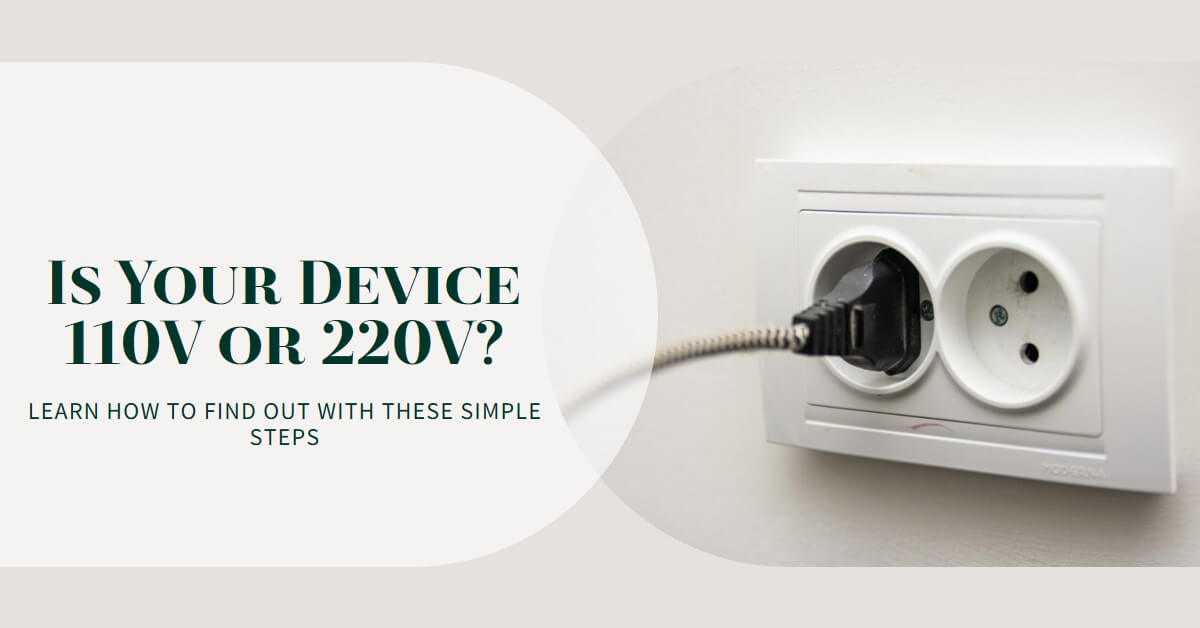Image: “Article Feature Image” by Bing, Source: [Bing Graphic Art].
Determining the voltage requirement of your electronic devices is essential to ensure their safe and efficient operation.
Using the wrong voltage can lead to permanent damage to your device or even pose a safety risk. This article will guide you on how to easily determine whether your device operates on 110V or 220V.
As a short answer, To know if your device is 110V or 220V, check the device label, inspect the power cord and plug type, consult the user manual, or contact the manufacturer. Let’s dig deeper!
Understanding Voltage
Voltage refers to the electrical potential difference between two points in a circuit. In the United States, the standard household voltage is 110V, while many other countries use 220V as the standard. Understanding the difference between these two voltages is crucial to prevent compatibility issues.
Device Labeling and Documentation
Check the device label or packaging for information about its voltage requirements. Manufacturers often provide clear indications about the voltage range the device supports.
Additionally, consult the user manual or specifications sheet for explicit details on the voltage needed for proper functioning.
Physical Appearance of the Device
Inspect the power cord of your device for any labeling or markings indicating the voltage rating. Some power cords have imprinted information, while others may use color coding.
Furthermore, the plug type can sometimes offer clues about the voltage. For instance, North American plugs with two flat prongs usually indicate 110V, while plugs with three round prongs are commonly used for 220V devices.
Online Research and Resources
If you’re unsure about the voltage of your device, conducting online research can provide valuable insights.
Visit the manufacturer’s website, as they often provide comprehensive product information, including voltage specifications.
Additionally, explore online product listings and customer reviews, as they might contain helpful details about the device’s voltage.
Contacting the Manufacturer or Seller
When in doubt, reach out to the manufacturer or seller directly. Look for their contact information on the packaging, user manual, or their official website.
Communicate with their customer support team and inquire about the voltage requirements of your specific device. They should be able to provide accurate and reliable information.
Read also my article: Voltage Mismatch: Can 220V Harm Your 110V Appliance?
Seeking Professional Assistance
If you’re uncertain about the voltage requirements or uncomfortable performing the tests yourself, it’s advisable to consult a professional electrician.
Electricians possess the knowledge and expertise to accurately determine the voltage of your device and can offer guidance on compatibility and safety measures.
Precautions and Safety Measures
When dealing with electricity, safety should always be a priority. Using the wrong voltage can damage your device and, in extreme cases, lead to electrical hazards.
Take necessary precautions such as wearing insulated gloves, avoiding wet conditions, and disconnecting the device from the power source before performing any tests or inspections.
Consider using voltage converters or transformers when using devices that require a different voltage than what is available in your region.
These devices can help adapt the voltage to match the requirements of your device while ensuring safe operation.
If you are not 100% sure about the device voltage never try to plug the appliance into the outlet.
Read also my article: Voltage Mismatch: Consequences of Running a 220V Dryer on 110V
Conclusion
Determining whether your device operates on 110V or 220V is crucial to prevent potential damage and ensure optimal performance.
By carefully examining the device label, consulting documentation, performing online research, and using appropriate testing tools, you can confidently determine the voltage requirements of your device.
Prioritizing safety and seeking professional assistance when needed will help you make informed decisions and protect your valuable electronic equipment.


